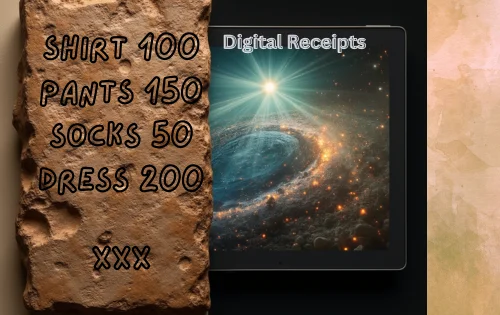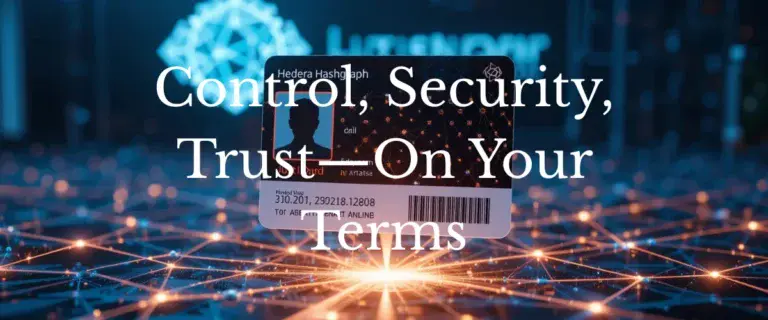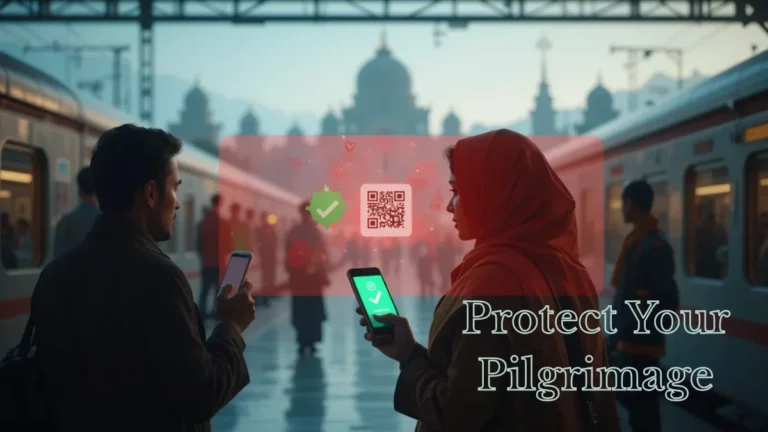Decentralized Identity: Secure Your Digital Self Forever or Risk Losing Everything”
Web3 Rescued You From
- Centralized Vulnerability: How your personal data is stored in one place, making it a hacker’s dream.
- Historical Weaknesses: From clay tablets to paper receipts, to a long history of identity theft.
- Digital Age Risks: From phishing to SIM swapping, the myriad ways your phone can betray your privacy.
- The Need for Change: Why the current system is failing us and why we need a revolution in identity management.
Web3 Rescued
- Historical Context: Understand how identity management has evolved, highlighting why we need a new approach.
- Current Threats: Grasp the real dangers of centralized digital identity in the modern world.
- The Blockchain Solution: Learn how blockchain technology can offer secure, personal control over your identity.
- A Vision for the Future: Imagine a world where your digital identity is as secure and private as your physical one.
Web3 Rescued Recommends
Ledger Nano X – The Ultimate Hardware Wallet for Securing Your Crypto Assets
The Ledger Nano X is the perfect companion for anyone diving into the world of Web3. It offers top-notch security for your cryptocurrencies and digital assets, ensuring that you have full control over your investments. With its Bluetooth connectivity and user-friendly interface, managing your crypto has never been easier.
Are you ready to take back control of your digital identity? Dive into this journey from ancient receipts to the dawn of decentralized identities. Let’s secure your future – click to read more and start your path to digital sovereignty.
The Evolution From Centralized To Decentralized IDs
Why Do We Have Receipts?
Receipts serve as proof of ownership, facilitate dispute resolution, support warranty claims, validate experiences, and much more. Today, your current form of identification might be a receipt indicating your understanding of driving rules. In some ways, we have not advanced as much as we might think. These “receipts” or documents, which represent our identity and transactions, have always been vulnerable to loss, forgery, or theft, reflecting the same issues we face with centralized identity systems.
The first known receipt dates back to around 3400-3000 BCE in ancient Mesopotamia, recorded on a clay tablet using cuneiform script. This tablet, discovered in modern-day Iraq, details a transaction involving garments and their prices, setting the stage for millennia of identity management practices.
Ancient Receipts to eReceipts
We have been carrying paper receipts for thousands of years. If you check your pocket today, you’ll likely find a receipt from a recent purchase, illustrating that we’re still bound to physical or centralized systems for our transactions and identities.
- From Clay to Papyrus: Early receipts were inscribed on clay, marking the beginning of commerce and establishing trust. This practice evolved to using papyrus in Egypt and later paper, thanks to advancements in paper-making around 105 AD. However, these physical means still left room for human error and loss.
- Identity and Commerce: Recording transactions linked to identity, recognizing buyers and sellers in these exchanges. This mirrors our centralized ID systems where identity is managed by a single entity, exposing us to similar risks when those systems fail.
The Digital Revolution
With the advent of the Internet, digitizing documents became essential. Key milestones include:
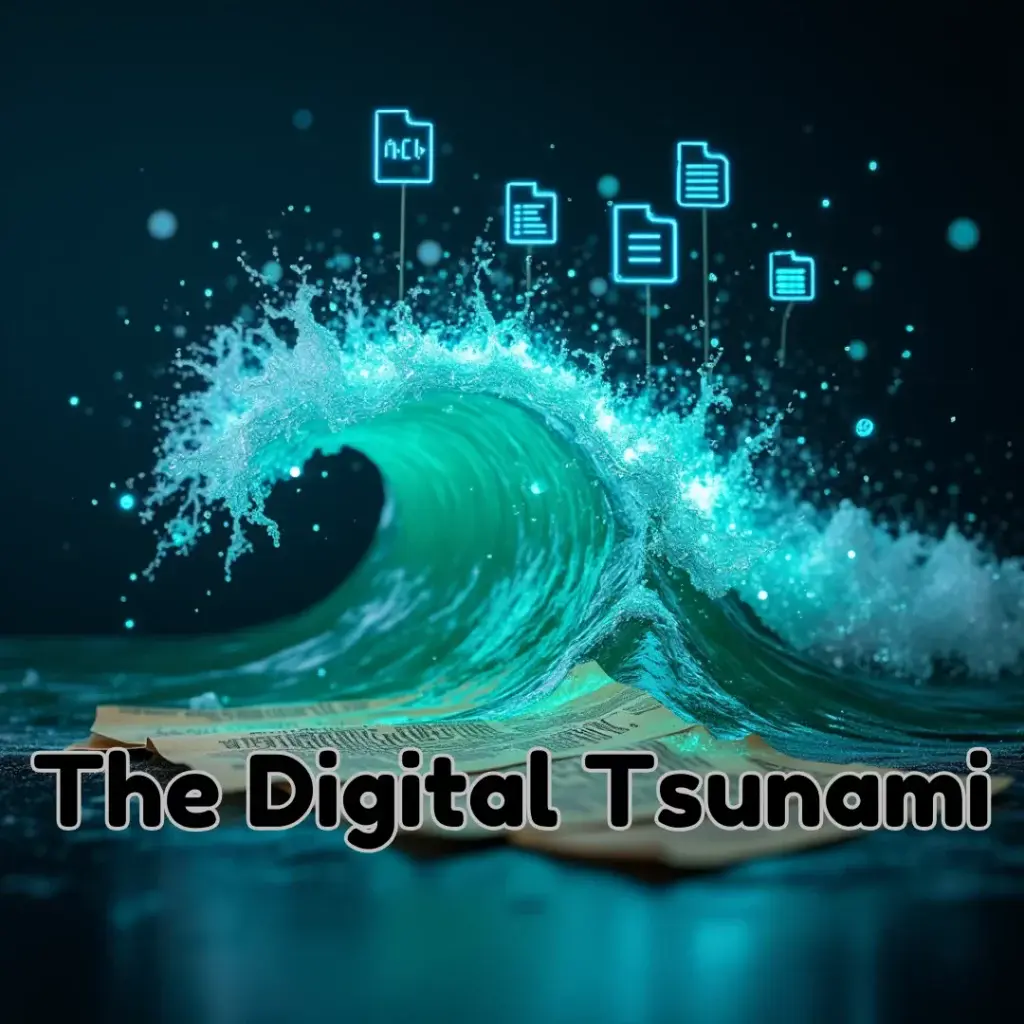
- 1971: Project Gutenberg began digitizing texts, starting with the U.S. Declaration of Independence.
- 1993: Adobe released the PDF format, aiding document sharing.
- 2000s: The focus expanded to accessibility and security, but the underlying issue of centralized data storage persisted, as seen with technologies like Optical Character Recognition (OCR).
Thus, the digitization of paper documents for web access has been an ongoing historical process, but significant vulnerabilities in privacy and control remain.
Digitized Businesses Leads to Digitized Lives
Just as businesses have transitioned from physical ledgers to digital records for efficiency and security, we are now witnessing a parallel shift in personal identity management. The digitization of receipts is a microcosm of this broader trend, where personal and professional credentials bound by paper are now moving towards digital formats. However, this evolution has often maintained centralized control, where personal data is vulnerable to breaches, as every digital receipt or ID is stored in centralized databases.
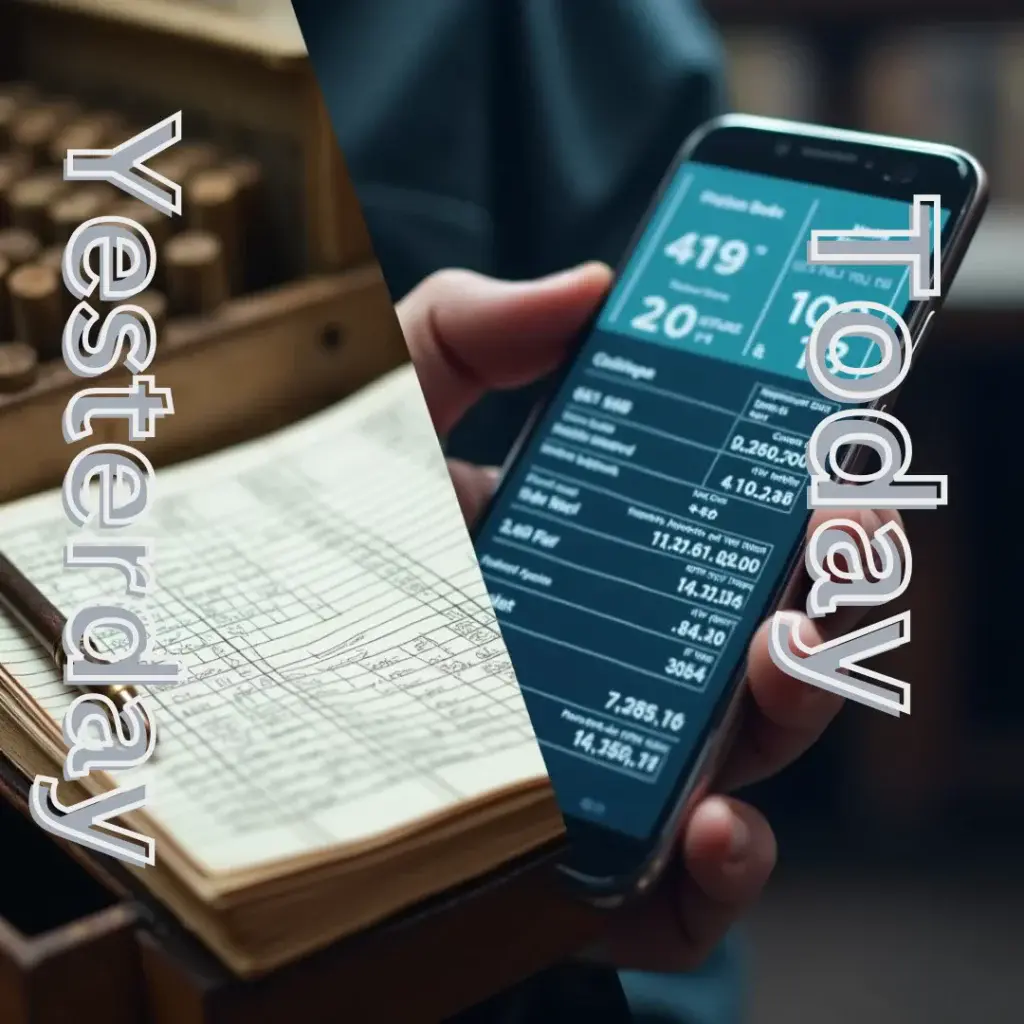
Your bank has gone “paperless”. You “save a tree” by bypassing receiving a receipt. Everything we do as a consumer interacting with business is paperless. But look in your wallet. What do you have? You have receipts that represent your life, each tied to a centralized system where your personal data resides, creating a landscape ripe for hacking.
What do all of these “receipts” have in common? You gave EVERY ONE OF THEM your personal data in exchange for privileges. How many receipts do you have in your wallet? How many more online establishments have stored your personal data in a centralized database? EVERY ONE OF THEM is a target for hacking. You entrust hundreds of companies with your identity. You are asking for trouble if we do not change.
The Early Days: Centralized Identification Systems
Centralized identification systems are still the norm, mirroring the ancient practice of receipts. From birth certificates to national IDs, our identities are tied to databases controlled by central authorities. This centralization creates a single point of failure, much like the physical receipts of old, where one breach could compromise our entire identity. While centralization offers structure, it also brings significant constraints, especially when it came to privacy and security. People started questioning the reliability and safety of these systems.
This part of the history laid the groundwork for future developments. Recognizing where we came from helps us appreciate the leap toward decentralized systems. Despite their ubiquity, centralized ID systems were never infallible or without risk, setting the stage for our transition to a more secure identification era.
Emergence of the Digital World: The Dawn of Change
The birth of the digital era marked a reflection point for identification systems. After 5000 years, is it time to rethink who controls our identification? As technology advances, it is clearer that relying on paper documents and central repositories is no longer feasible. As a consumer, how much information do you carry on your phone?
Unfortunately, your phone is not secure. Here are some of the easiest ways hackers can compromise your device:
- Phishing: Fake emails or texts trick you into giving away information or clicking malicious links.
- Public Wi-Fi: Using unsecured networks can expose your data to interception.
- Malicious Apps: Downloading apps from unofficial sources can lead to malware infection.
- Bluetooth Attacks: Keeping Bluetooth always on can make your phone vulnerable to unauthorized access.
- SIM Swapping: Hackers can take over your phone number to steal your texts and calls.
- Physical Access: If someone gets hold of your phone, they can install spyware or access your data if it’s unlocked.
- Malvertising: Malicious ads can infect your device without you even clicking them.
- Software Vulnerabilities: Not updating your phone can leave it open to known security exploits.
In a world where our digital identities are as precious as our physical ones, understanding these risks is important. Just as we seek to control our digital identity through decentralization, securing our phones is crucial to protect our personal data.
The day may come when we can use our phones for decentralized identification purposes, but with all these vulnerabilities, it will not happen fast enough.
Transition Phase: The Shift Towards Decentralization
The vulnerabilities of our current systems are clear: from the centralized databases that hold our digital ‘receipts’ to the unsecured phones that carry our digital lives. The question isn’t if we should move towards decentralization but how quickly we can make it a reality.
Decentralization in identity management means moving from a single point of control to a system where you are the custodian of your data. Imagine if instead of handing over your identity to countless services, you could prove who you are through a secure, personal network where you decide what information is shared and with whom. This isn’t just a technical shift; it’s a reclamation of personal sovereignty over our digital selves.
Key technologies like blockchain offer a ledger where your identity data can be stored immutably and cryptographically secured, reducing the risks we’ve discussed.
Blockchain to the Rescue
Key events, like the introduction of blockchain technology, became game-changers. These innovations provided the technical foundation for decentralization, offering new ways to secure personal data without relying on a single authority. Suddenly, possibilities for decentralized identification systems seemed within reach.
Early proponents of decentralized systems included forward-thinking tech companies and privacy advocates.
Their vision was simple: put control back in the hands of individuals.
Backed by advancements in cryptography, these pioneers began crafting systems that protect data and empower users.
Blockchain, with its secure and transparent nature, allowed for information to be verified without central oversight. Meanwhile, cryptography provided the tools to ensure that only the rightful owner had access to their data, doubling down on security and privacy.
These developments signaled a clear shift in thinking. The focus began moving from managing identities administratively to enabling personal control and ownership.
Let Me Simplify This – After doing the research for you and having laid the argument meticulously, for all the reasons I believe that we are headed for decentralized identification. Blockchain and Bitcoin have proven themselves secure and unbreakable. Centralized storage is an utter failure.
Follow along as I explain
The Evolution of Identity From Clay Tablets to Digital Souls
The Dawn of Documentation
Long, long ago, in the fertile lands of ancient Mesopotamia, a scribe meticulously inscribed the details of a garment transaction onto a clay tablet using cuneiform script, marking one of the world’s first known receipts around 3400-3000 BCE. This act wasn’t just about commerce; it was about establishing an identity, trust, and accountability in a burgeoning civilization.
As millennia passed, this practice evolved. From the clay of Mesopotamia to the papyrus of Egypt, and eventually to paper with the advent of paper-making in China around 105 AD, the concept of documenting identity and transactions took root. However, these physical tokens of identity were always vulnerable to loss, theft, or forgery.
The Digital Revolution
Fast forward to the late 20th century, when the digital revolution began to reshape this ancient practice. In 1971, Project Gutenberg started digitizing texts, symbolizing the beginning of an era where information would no longer be bound by physical constraints. By 1993, Adobe introduced the PDF format, revolutionizing document sharing. The 2000s saw a surge in digitization, with initiatives from the Library of Congress and the National Archives focusing on accessibility and security through technologies like OCR.
But even as our world became digital, the centralized nature of identity management persisted, mirroring the vulnerabilities of ancient receipts. Your bank might have gone “paperless,” offering to “save a tree” by forgoing physical receipts, yet every digital transaction, every piece of personal data, was still stored in centralized databases, ripe for hacking.
The Blockchain Epiphany
Then came blockchain in 2009 with Bitcoin, an innovation that would change the narrative. There was a technology where transactions could be recorded securely, immutably, without a central authority controlling the ledger. This sparked an idea among tech visionaries and privacy advocates: What if we could apply this to identity?
The Transition to Decentralized Identity
The journey towards this new paradigm began. Early proponents envisioned a world where individuals held sovereignty over their digital selves. By leveraging blockchain’s decentralized nature and cryptography’s security, they started crafting systems where people could control their own identities, sharing only what was necessary with whom they chose.
Governments and corporations, initially skeptical, began to see the potential. Pilot programs tested blockchain-based identity systems in tech-forward cities, issuing digital credentials for everything from education to healthcare, secured by the same principles that protected financial transactions on the blockchain.
The Hardware Wallet Future
Imagine a future not far from now, where instead of carrying wallets stuffed with paper and plastic, each individual possesses a single hardware device – a DID wallet. This wallet, small enough to fit in your pocket or hang around your neck, contains encrypted records of your life from birth to the present, safeguarded by blockchain technology.
This device isn’t just a wallet; it’s a testament to your identity. It holds your educational achievements, medical history, financial transactions, and more, all secured by layers of encryption. Losing it would be like losing a key to a treasure chest, but with modern technology, backups, and recovery methods ensure your identity isn’t lost forever.
The Security Question
Theft of such a device might seem like a jackpot for criminals, but here’s the catch: without your biometric data or the recovery key, the wallet’s contents are as secure as the blockchains they’re linked to. There are no “fabricated holes” unless there’s a catastrophic failure in design or manufacturing, which the community vigilantly guards against through open-source scrutiny and regular security audits.
Envisioning Tomorrow
In the future, identity theft, data breaches, and the centralization of personal data become relics of the past. Imagine seamless border crossings with a digital passport, secure voting, and instant, private access to medical records. Your identity would be yours to manage, share, or protect.
This vision faces challenges like interoperability, user education, and regulatory acceptance. Yet, we’re advancing towards a world where digital identities are as secure as our physical ones, evolving from ancient tablets to encrypted digital souls.
Blockchain and decentralized identifiers promise a future where we control our digital selves, safeguarding our privacy and history. Picture a world where your identity is a treasure, not a commodity, where you dictate your privacy.
Can we envision this future? Are we ready to embrace decentralization and take control of our digital lives?
Join us in championing Web3 Rescued and helping shape a more equitable digital landscape for everyone!
Share this post to help others discover the transformative power of Web3 and Web3 Rescued.
Let’s work together to build a decentralized future!

